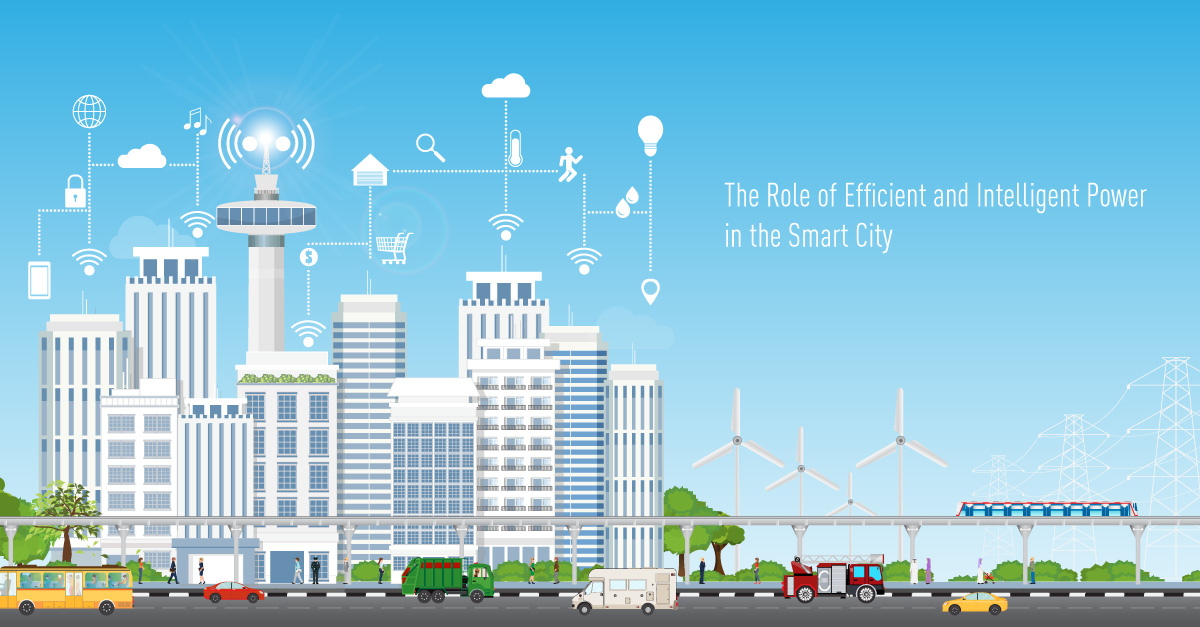The Role of Efficient and Intelligent Power in the Smart City
RJ Tee
April 11, 2019
- Categories:
- Industry Trends and Solutions
- Tags:
- intelligent PDU

In our previous post on the smart city, and as explained in Marc Cram’s latest whitepaper, ‘Smart Cities Run on Smart Power,’ we identify the contributing factors in the development of smart city technology. It is the advent of the microprocessors and microchips that collect the massive quantity of intelligence that enables the city. In this blog we will shift our attention to another contributor: energy efficiency measures in the field, at the data center, and within racks that are supported by data center environmental monitoring and intelligent PDU(s).
As city leaders push aggressively for improving the energy efficiency of everything that is plugged into the city’s electrical grid, it has created cascading levels of efficiency.
The adoption of renewable energy sources is mandated to lessen the need for the oil and coal consumption that enable the transportation systems and electronic devices of mobile citizens. Meanwhile, the adoption of electric cars, electric bikes, and other electronic gadgets is placing additional demand on the existing power generation facilities at a rate greater than efficiency programs can offset. This requires additional power sources to be brought
Somewhat paradoxically, the increase in energy efficient systems has led to the consumption of more oil and coal. The net increase in the number of electrical systems, microgrids, and connected devices has led to an overall
In order to provide
The challenges of the smart city encompass increasing efficiency, complying with renewable mandates, reducing overall energy consumption, storing and generating power, all while meeting increasing demand. ServerTech is at the forefront of this challenge, ready with PDU solutions to monitor and report energy use. For more on what it takes to make a smart city run, see the new ‘Smart Cities Run on Smart Power’ whitepaper by Marc Cram.
Thanks for your submission. One of our Power Strategy Experts will get back to you shortly.